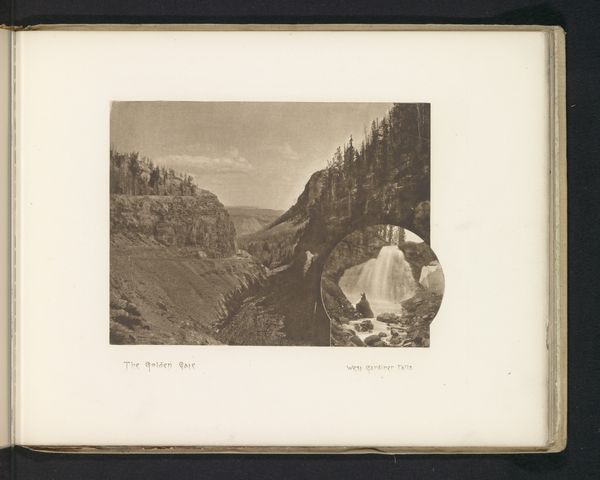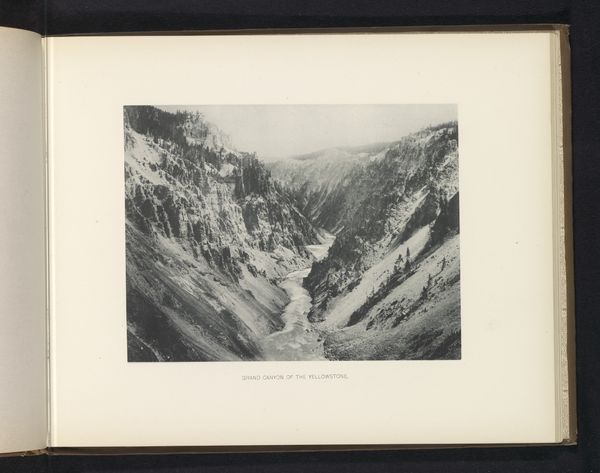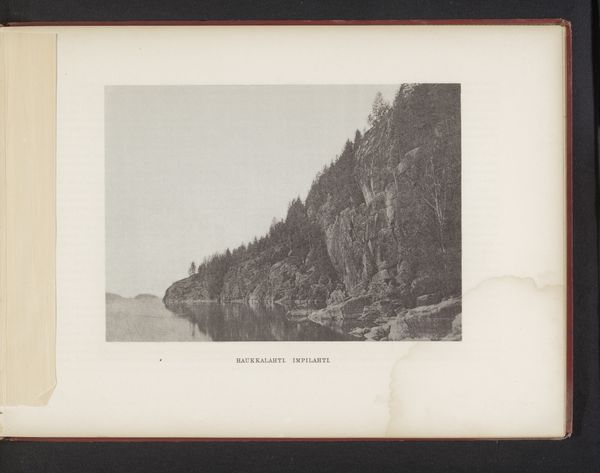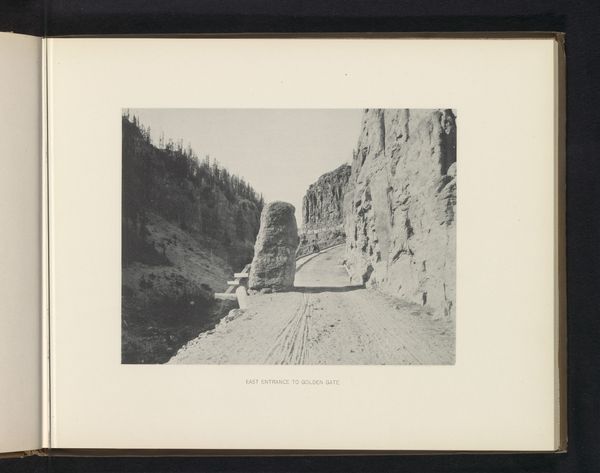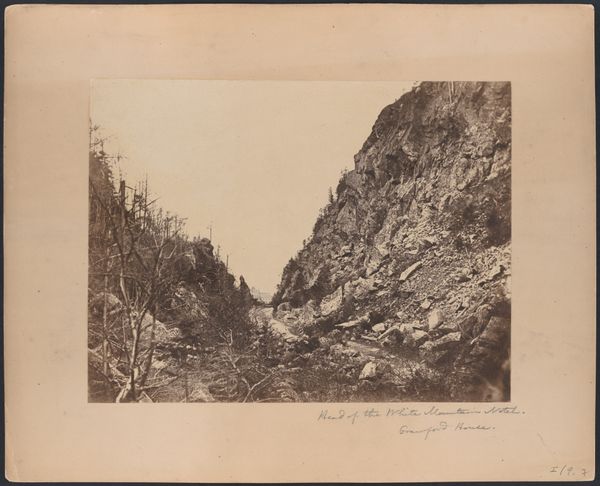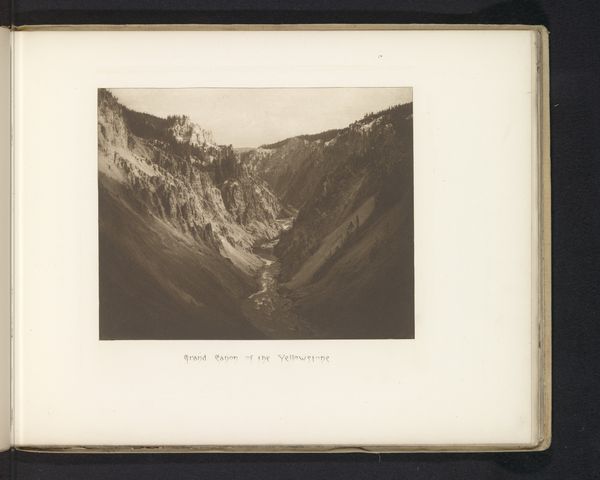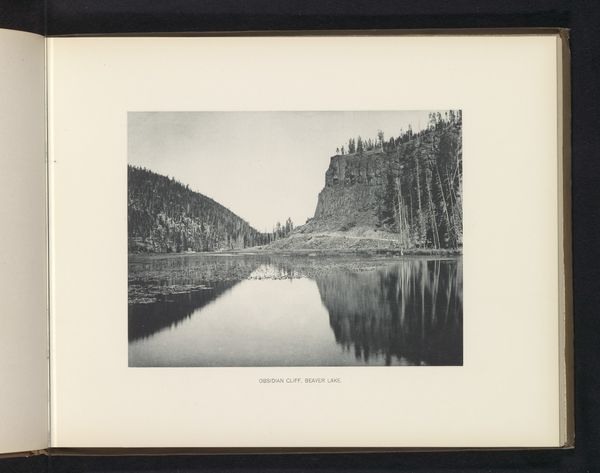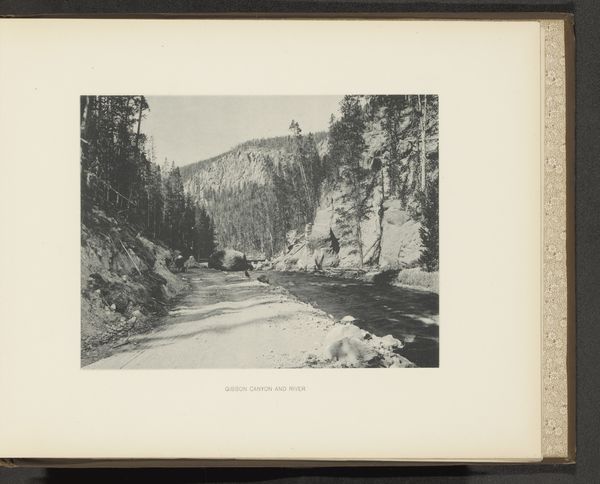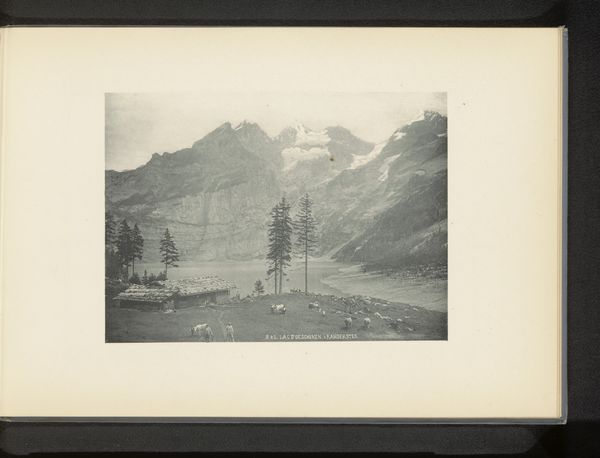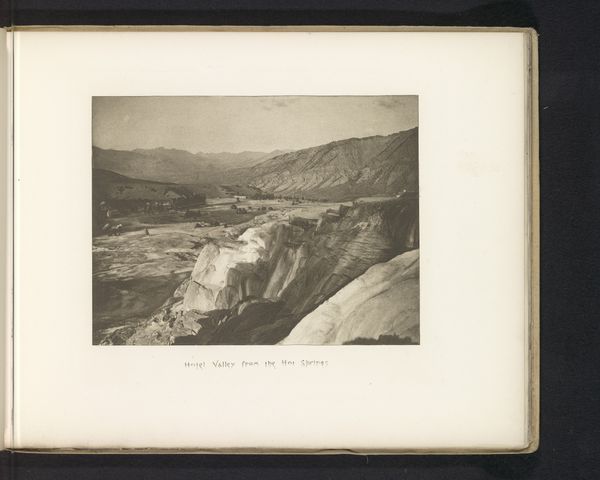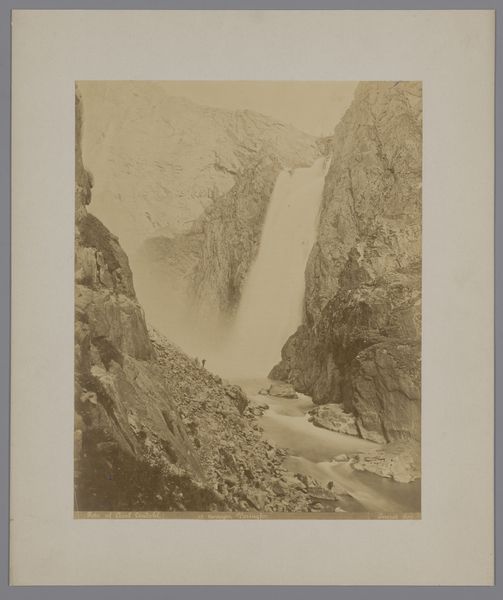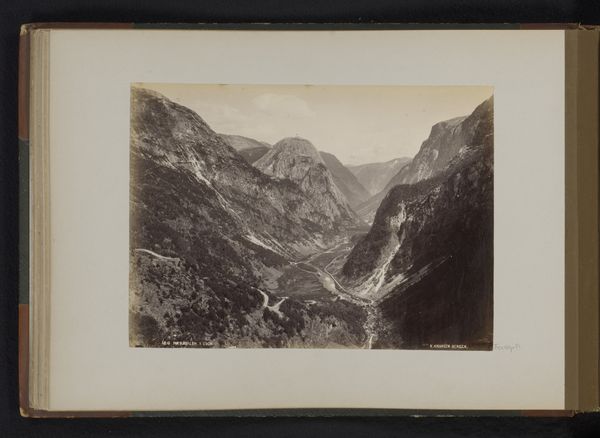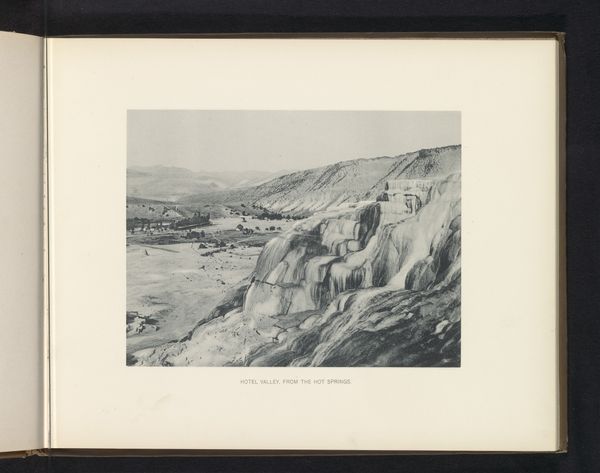
Dimensions: height 165 mm, width 215 mm
Copyright: Rijks Museum: Open Domain
Editor: This is "Golden Gate Canyon," a gelatin-silver print taken by Frank Jay Haynes before 1891. The monochromatic tones and dramatic landscape create a stark, powerful feel. What formal qualities stand out to you? Curator: Immediately, the stark contrast arrests the gaze. Consider the formal dichotomy: a play between the textured, jagged face of the canyon wall on the left, juxtaposed against the more linear, vertically-oriented stand of trees on the right. Do you notice how the photographer has positioned the road? Editor: Yes! It creates a diagonal line leading the eye deeper into the canyon, emphasizing the vastness of the space. Is that a common compositional strategy? Curator: Indeed. It exploits linear perspective, a strategy rooted in the Renaissance and continually reimagined. Here, though, the silver gelatin print gives the image a certain weight, a physicality. The manipulation of light and shadow further enhances the structure, defining the spatial relationships. How does the composition inform your perception of scale? Editor: It emphasizes it. The road looks tiny against the immense rock formations. The image almost seems to celebrate the power of nature, yet there's also something serene in the ordered way the photographer framed it. Curator: A tension emerges from the sharp definition of light and dark—what some may call a "sublime" quality. Haynes harnesses tonal gradation and strong lines. Together, the compositional elements communicate a profound sense of place. Editor: I see it now. Looking closer, I realize how much the balance of dark and light, texture, and perspective truly shape the image. I hadn't considered those dynamics. Curator: Paying attention to how visual elements such as line, shape and form interact can unlock a world of understanding.
Comments
No comments
Be the first to comment and join the conversation on the ultimate creative platform.
